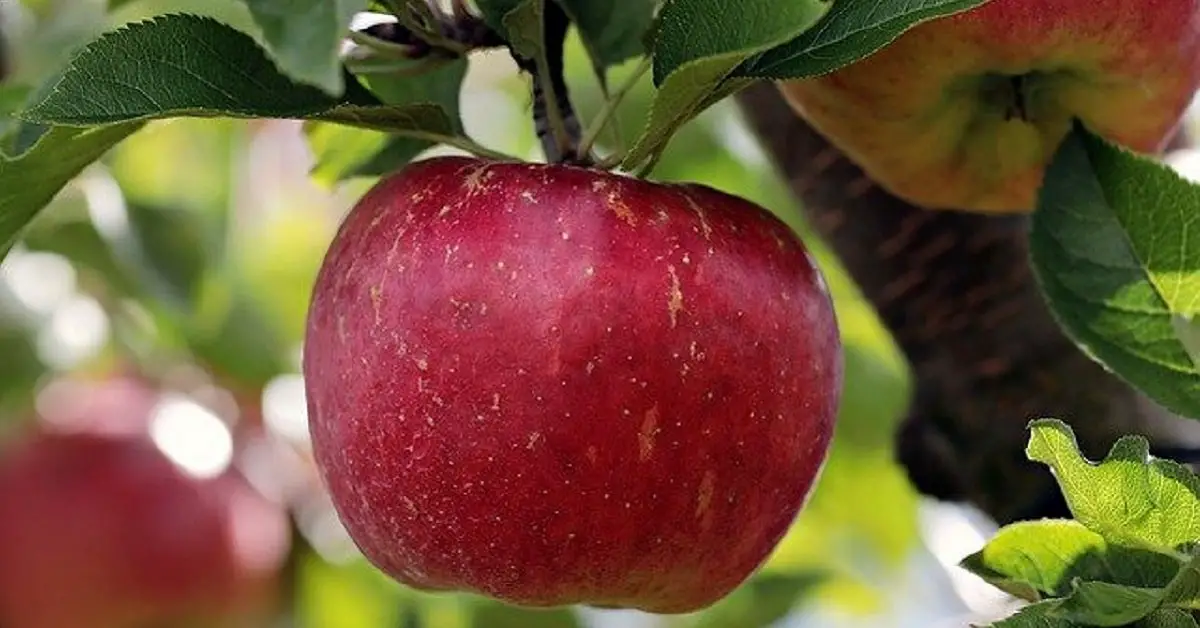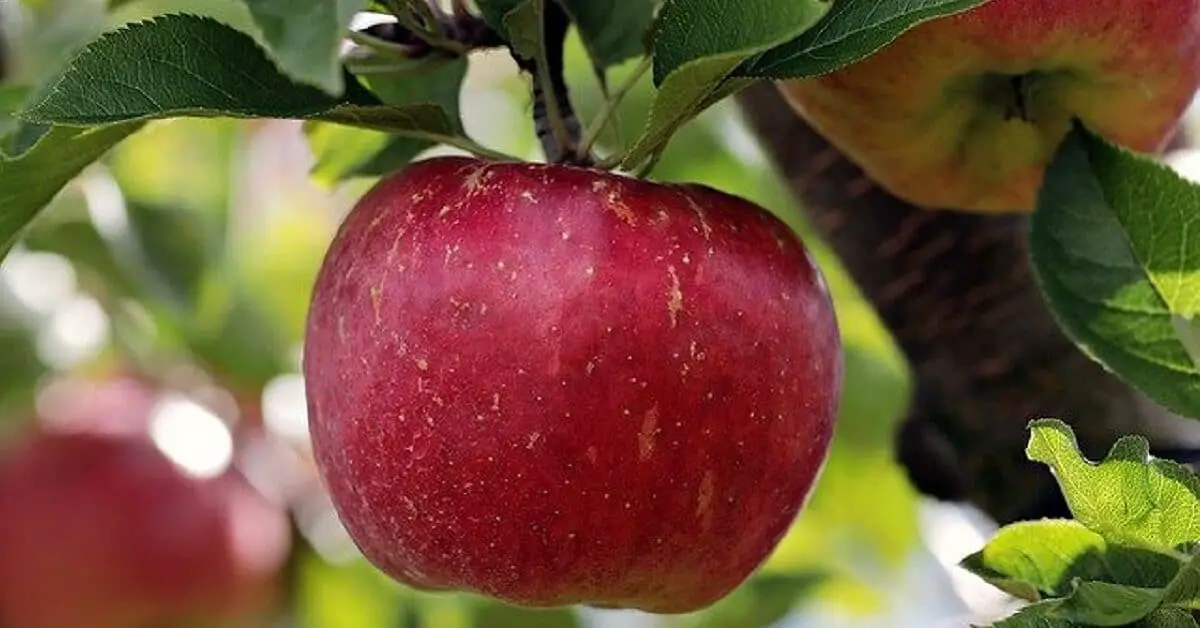
This article answers all your questions about how many calories are in an apple (Malus domestica/Malus pumila). We compare the calorie contents of small, medium, and large apples. We also compare the calorie contents and nutrition facts for various apple cultivars, including Granny Smith, Red Delicious, Fuji, Gala, and Honeycrisp.
You’ve likely heard the saying that “an apple a day keeps the doctor away.” We shall examine apple nutrition facts to show why the saying is true.
If you are on a low-calorie diet or watching your intake of carbs and looking for information to help you determine how to incorporate apples into your diet, here is everything you need to know.
Contents:
Apple size classes: Large, medium, small apples
How many calories are in a large, medium, and small apple?
Cultivated varieties of apples (cultivars)
How many calories in an apple also depends on the variety
Which is the healthiest cultivar?
Apple size classes: Large, medium, small apples
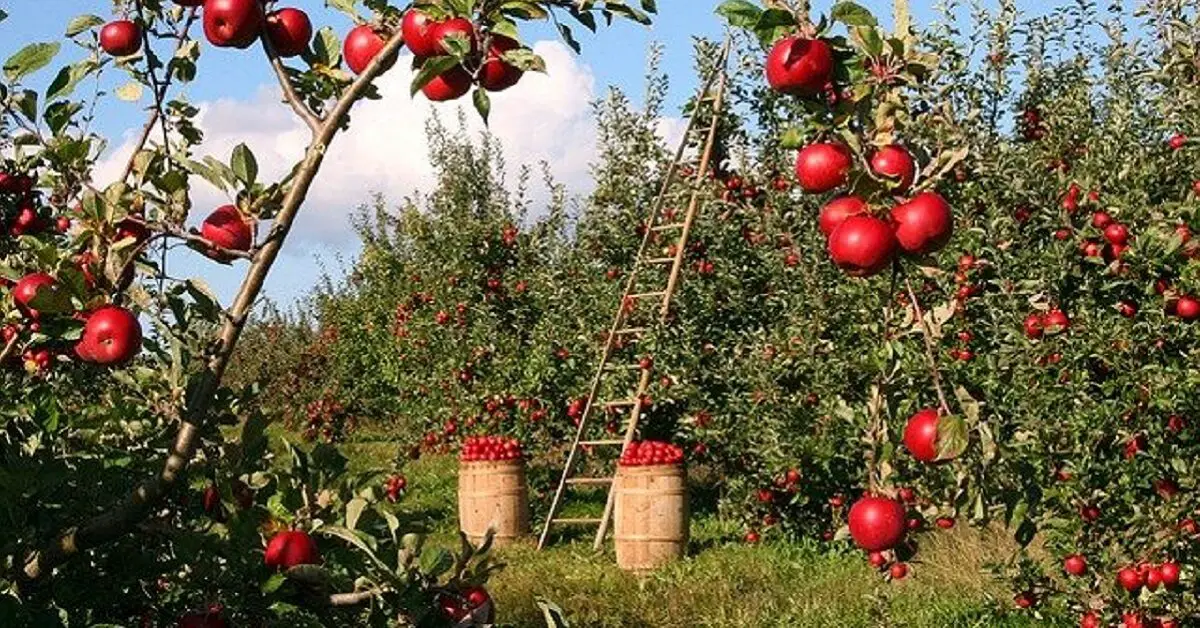
How many calories are in an apple depends on the size and weight. USDA’s FoodData Central classified apples into the following size and weight classes:
- Extra small (2-1/2 inch diameter) apple: 101g
- Small (2-3/4 inch diameter) apple: 149g
- Medium (3-inch diameter): 182g
- Large (3-1/4 inch diameter): 223g
How many calories are in a large, medium, and small apple?
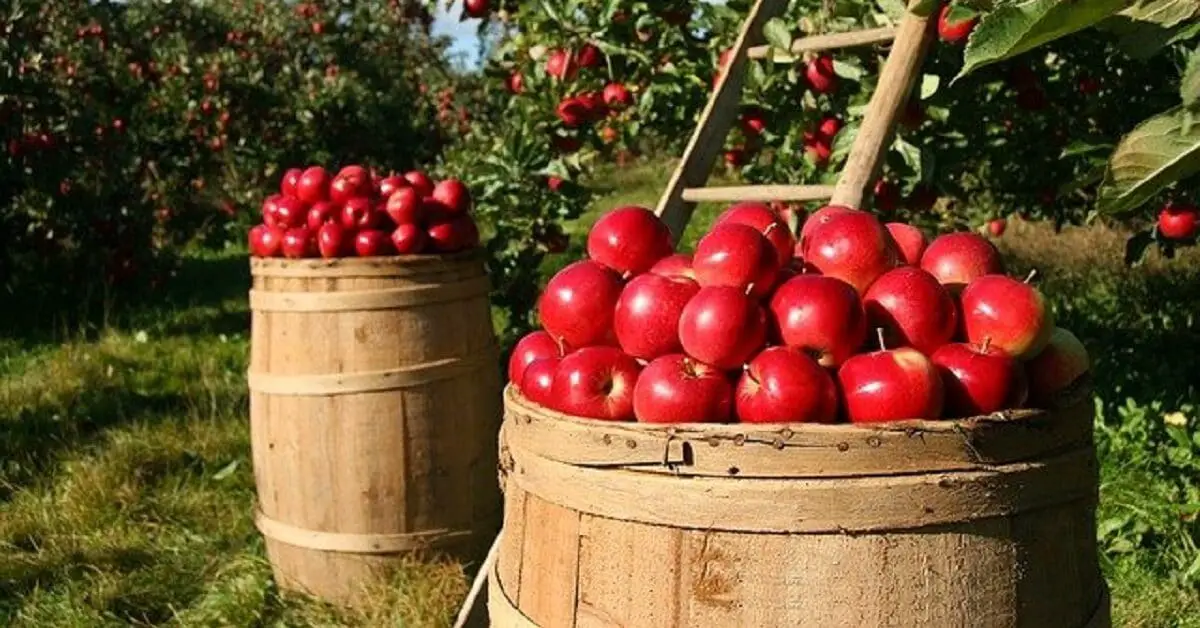
According to USDA FoodData Central:
- 1 extra small apple (raw, with skin) weighing 101g (2-1/2 inch diameter) contains 52.5 calories
- 1 small apple (raw, with skin) weighing 149g (2-3/4 inch diameter) contains 77.5 cal
- 1 medium apple (raw, with skin) weighing 182g (3-inch diameter) contains 94.6 cal
- 1 large apple (raw, with skin) weighing 223g (3-1/4 inch diameter) contains116 cal
An NLEA serving of 242g ( the serving size usually listed on nutrition facts labels) contains: 126 calories.
How many calories are in an apple? An overview
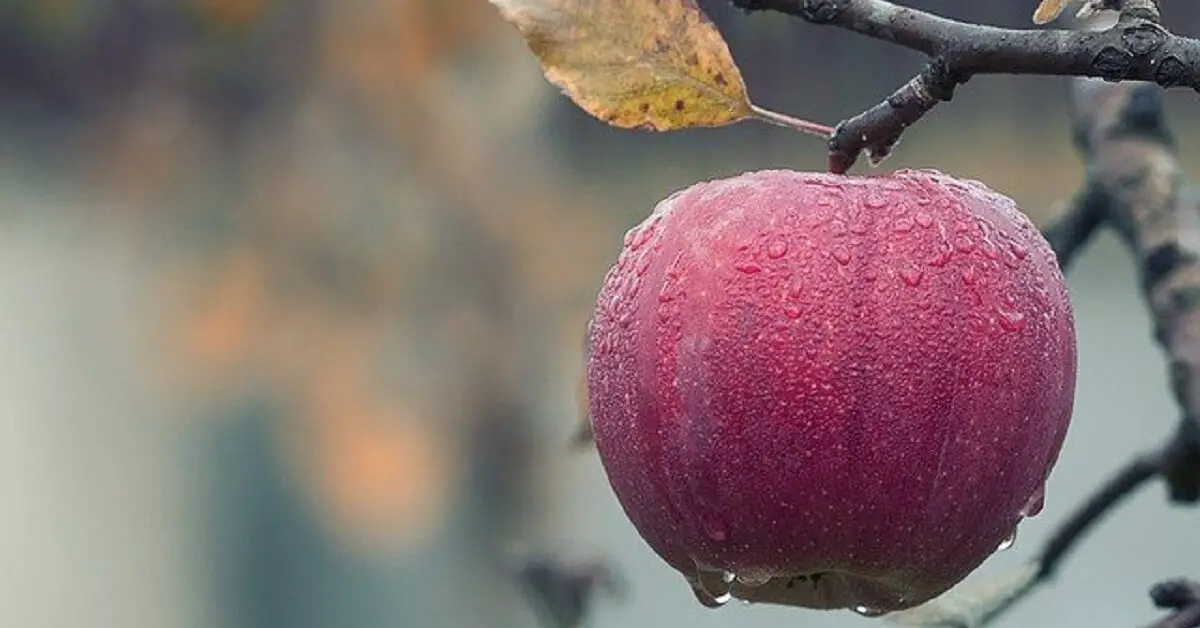
Apples fall in the midrange in terms of calorie content compared with other fruits.
They are low in calories compared with fruits such as bananas but high in calories compared with fruits, such as watermelon, cantaloupe, honeydew, plums, and lime, which have very low carbs and calorie contents.
For comparison, 100g of bananas (ripe and raw) contain 88 calories, while apples (raw with skin) contain 52 calories per 100g. A hundred grams of watermelon contains only 30 calories, lime 30 cal, cantaloupe 34 cal, honeydew 36 cal, and plums 46 cal.
Although fruits have different calorie contents, they are collectively low calorie foods compared with nutrient-dense foods such as eggs.
Apples are one of the healthiest fruits you can get. They are tasty, highly nutritious, and healthy snacks rich in vitamins (vitamin C and K), minerals, and fibers (including the soluble fiber pectin). They are also rich in antioxidants, such as beta-carotene, lutein, zeaxanthin, and flavonoid polyphenols, such as quercetin, anthocyanins, and anthocyanidins.
Despite having appreciable amounts of sugar, apples can be included in low carb and low-calorie diets when taken in moderate quantities. Their low glycemic index also makes them suitable for people watching their blood sugar levels.
Apples may be eaten whole (raw and fresh) or sliced with butter, cheese, peanut, or yogurt. Popular apple products, such as apple juice, cider, cider vinegar, and applesauce are also nutritious and beneficial to health.
Apple nutrition facts

As well as being conveniently ready to eat, tasty, shelf-stable, low-calorie snacks, apples are also healthful foods with many health-boosting nutritional benefits.
They are best eaten raw with the peel or skin because the peel contains most of the fruit’s health-promoting antioxidants.
Below are the nutrition facts about a large raw apple with skin weighing 223g (3-1/4 inch diameter).
- Water: 191g
- Energy: 116 cal (5.8%DV) DV=2000 calories)
- Protein: 0.58g (1.16%DV) (DV=50g)
- Total lipid (fat): 0.379g
- Carbohydrate, by difference: 30.8g
- Fiber, total dietary: 5.35g (19.12%DV) (DV=28g)
Sugars:
- Sugars, total: 23.2g
- Sucrose: 4.62g
- Glucose: 5.42g
- Fructose: 13.2g
- Starch: 0.112g
Minerals:
- Calcium, Ca: 13.4mg (1.031%DV) (DV=1300mg)
- Iron, Fe: 0.268mg (1.49%DV) (DV=18mg)
- Magnesium, Mg: 11.2mg (2.67%DV) (DV=420mg)
- Phosphorus, P: 24.5mg (1.96%DV) (DV=1250mg)
- Potassium, K: 239mg (5.09%DV) (DV=4700mg)
- Sodium, Na: 2.23mg
Trace minerals:
- Zinc, Zn: 0.089mg (DV=11mg)
- Copper, Cu: 0.06mg (6.67%DV) (DV=0.9mg)
- Manganese, Mn: 0.078mg (3.39%DV) (DV=2.3mg)
Vitamins:
- Vitamin C, total ascorbic acid: 10.3mg (11.44%DV) (DV=90mg)
- Thiamin: 0.038mg (3.17%DV) (DV=1.2mg)
- Riboflavin: 0.058mg (4.46%DV) (DV=1.3mg)
- Niacin: 0.203mg (1.27%DV) (DV=16mg)
- Pantothenic acid: 0.136mg (2.72%DV) (DV=5mg)
- Vitamin B6: 0.091mg (5.35%DV) (DV=1.7mg)
- Folate, total: 6.69mcg (1.673%DV)(DV=400mcg)
- Choline, total: 7.58mg (1.38%DV) (DV=550mg)
- Vitamin A, IU: 120IU (15%DV)(DV=800 IU)
Antioxidants:
- Carotene, beta: 60.2mcg
- Cryptoxanthin, beta: 24.5mcg
- Lutein + zeaxanthin: 64.7mcg
- Vitamin E (alpha-tocopherol): 0.401mg
- Vitamin K (phylloquinone): 4.9mg (4.09%DV) (120mcg)
[Note: We list %DV (Percent daily value) values based on a daily intake of 2000 calories, and Daily Values (DVs) are based on FDA’s latest updates.]
Source: USDA
Based on the %DV values listed above, we can judge that apples are richest in fiber, vitamin C, A, K, B6, riboflavin, thiamin, manganese, copper, potassium, and magnesium.
Besides vitamins, minerals, and carbs, apples are also rich in antioxidant polyphenols (Kschonsek et al., 2018) that have anti-inflammatory, anticancer (antiproliferative), cholesterol-lowering, and cardioprotective properties (Boyer and Liu, 2004).
Flavanols:
- Procyanidin B1
- (+)-Catechin
- Procyanidin B2
- Procyanidin C1
- (−)-Epicatechin
- Procyanidin A2
Phenolic acids:
- Gallic acid
- Protocatechuic acid
- 5-O-Caffeoylquinic acid (chlorogenic acid)
- Caffeic acid
- p-Coumaric acid
- Ferulic acid
Flavonols:
- Quercetin-3-O-galactoside (Hyperoside)
- Quercetin-3-O-glucoside (Isoquercitrin)
- Quercetin-3-O-rutinoside (Rutin)
- Quercetin-3-O-xyloside (Reynoutrin)
- Quercetin-3-O-arabinoside (Avicularin)
- Quercetin-3-O-rhamnoside (Quercitrin)
- Quercetin
Dihydrochalcones:
- Phloretin-2-O-β-glucoside (Phloridzin)
Cultivated varieties of apples (cultivars)
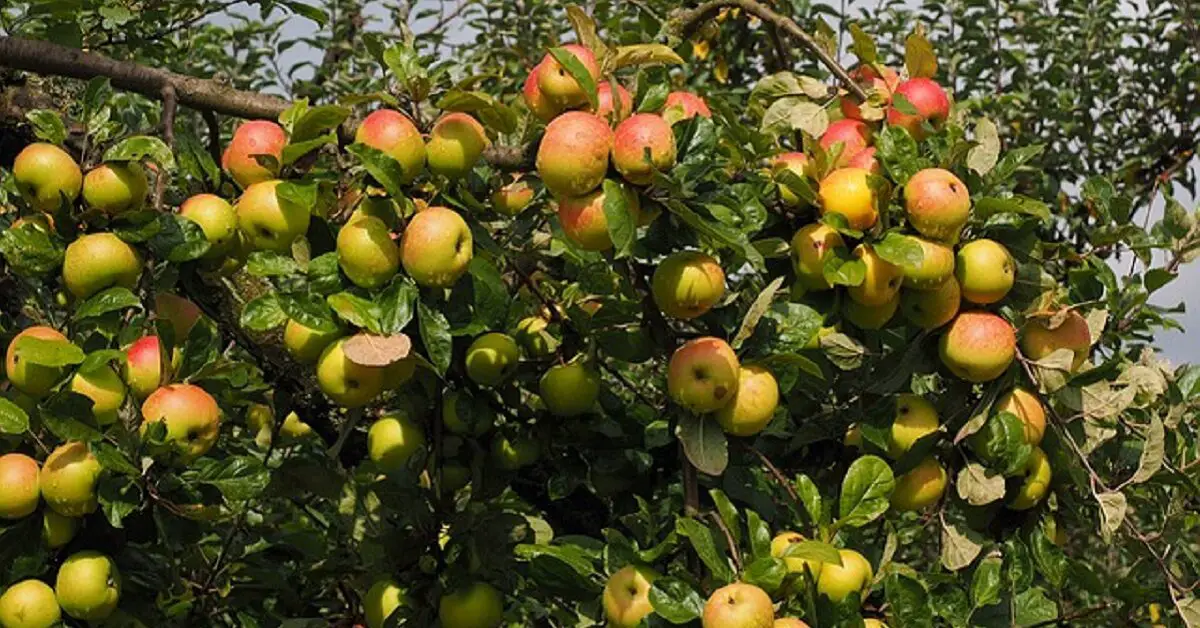
Thousands of varieties of apples (known as cultivars) are grown around the world. Some of the most widely cultivated in the U.S. include:
- Gala
- Granny Smith
- Red Delicious
- Fuji
- Honeycrisp
- Empire
- Braeburn
- Golden Delicious
- Crisp Pink/Crisp Lady
- McIntosh
- Cortland
How many calories in an apple also depends on the variety
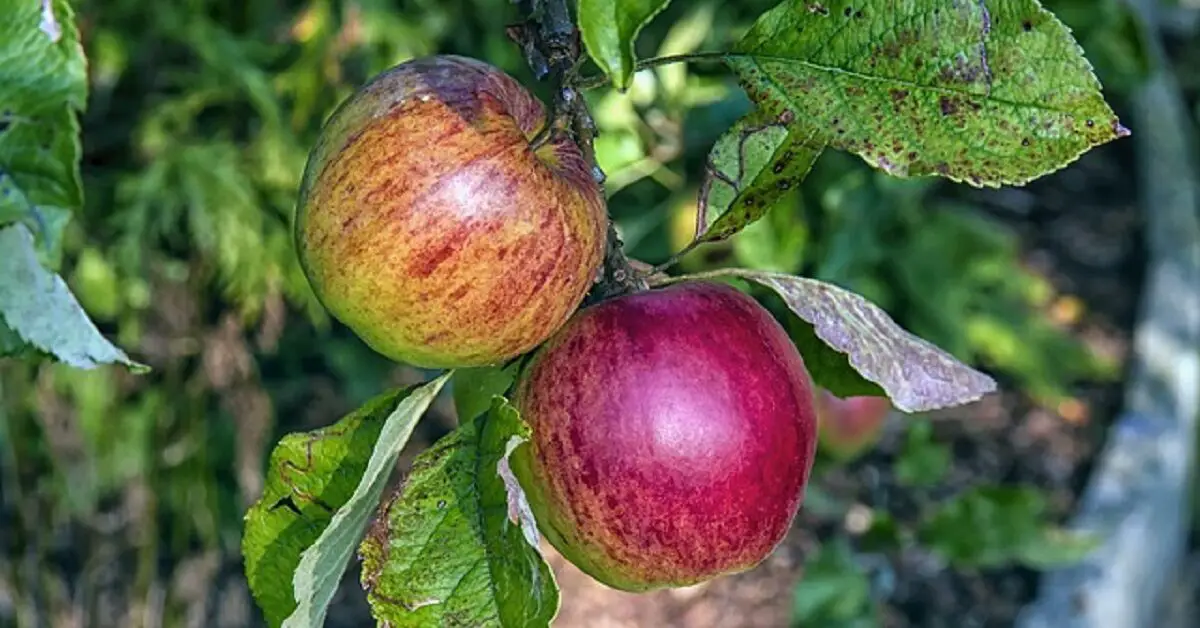
USDA FoodData Central lists the nutrition facts for various apple varieties, including Granny Smith, Red Delicious, Fuji, Gala, Honeycrisp, and Braeburn. The data makes it possible to compare the different cultivars for significant differences in nutritional qualities.
Apple varieties have different calorie contents, but the differences are minor in most cases.
Red Delicious and Fuji apple varieties have the highest calories, while Granny Smith has the lowest, according to USDA data.
- 100g Granny Smith apples (raw, with skin): 53 calories.
- 100g Gala apples (raw, with skin): 55 cal
- 100g Fuji apples (raw, with skin): 58 cal
- 100g of Honeycrisp apples (raw, with skin): 54 cal
- 100g of Red Delicious apples (raw, with skin): 56 cal
Which is the healthiest apple cultivar?
A comparison of USDA’s nutrition facts data for different varieties of apples also shows that they have different levels of carbs, sugars, minerals, vitamins, and antioxidants.
The differences have led health-conscious consumers to ask which apple variety is the healthiest.
Granny Smith apple nutrition
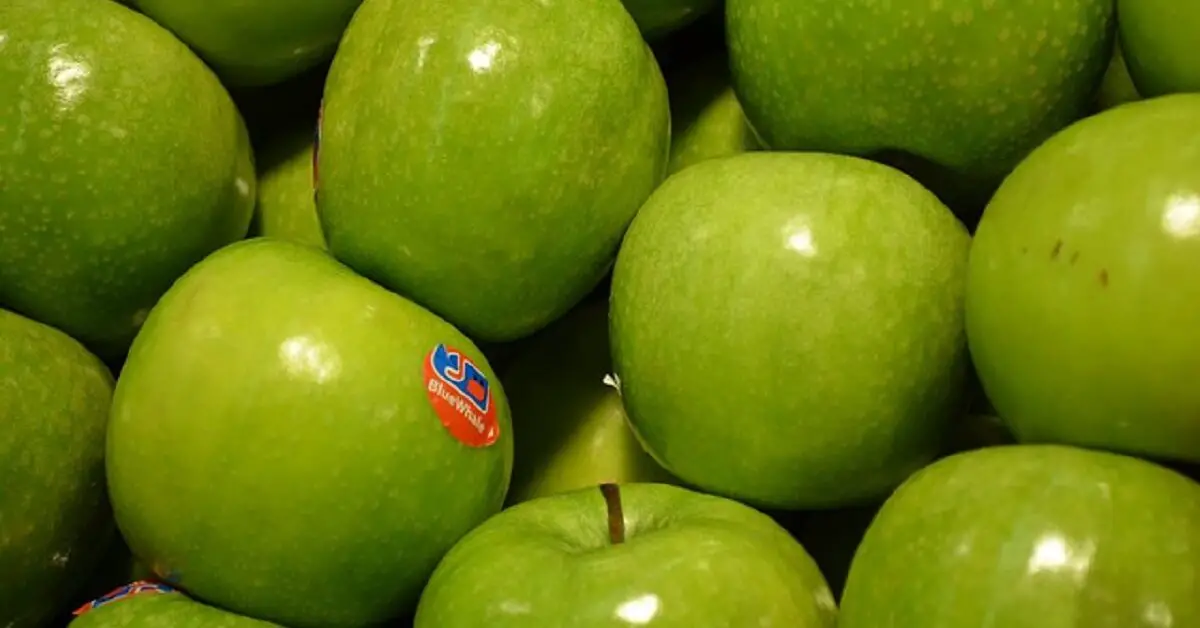
Granny Smith apple originated in Ryde, New South Wales, Australia. They are distinguished by their green skin.
Many nutritionists consider Granny Smith the healthiest apple for the reasons outlined below:
Granny Smith apples have a low total sugar and carb content compared with other varieties. They also have a high fiber content compared with other varieties of apples. The total dietary fiber per 100g is 2.5g compared with gala 2.1g, Red Delicious 2g, fuji 2.1g, and Honeycrisp 1.7g (see nutrition facts below).
Granny Smith is also relatively rich in minerals and vitamins. It is high in potassium (116mg) and iron. It contains 0.07mg of iron per 100g compared with Red Delicious and Honeycrisps which have negligible iron contents (<0.01mg). It is also relatively high in trace minerals, such as copper, and the B-complex vitamins Thiamin and riboflavin.
A study by Condezo-Hoyos and associates (2014) compared different apple cultivars (Braeburn, Fuji, Gala, Golden Delicious, Granny Smith, McIntosh, and Red Delicious cultivars) for levels of extractable phenolics, non-extractable proanthocyanidins, and dietary fiber.
They found that Granny Smith had the highest levels of fiber and antioxidants. They also reported that fermentation of Granny Smith fiber helped to reestablish microbiota balance in obese mice. Granny Smith fiber produced gut health-boosting probiotic bacteria (Firmicutes, Bacteroidetes, Enterococcus, Enterobacteriaceae, Escherichia coli, and Bifidobacterium) in relative concentrations that resembled the pattern in lean mice, with increased production of butyric acid.
Apples are generally rich in a soluble fiber known as pectin. Pectin promotes the proliferation of healthy gut bacteria. Bacteria ferment pectin in the gut to produce short-chain fatty acids (SCFAs).
SCFAs promote gut health and help prevent obesity, cardiovascular, and digestive system diseases, such as cancer.
Granny Smith nutrition facts (per 100g)
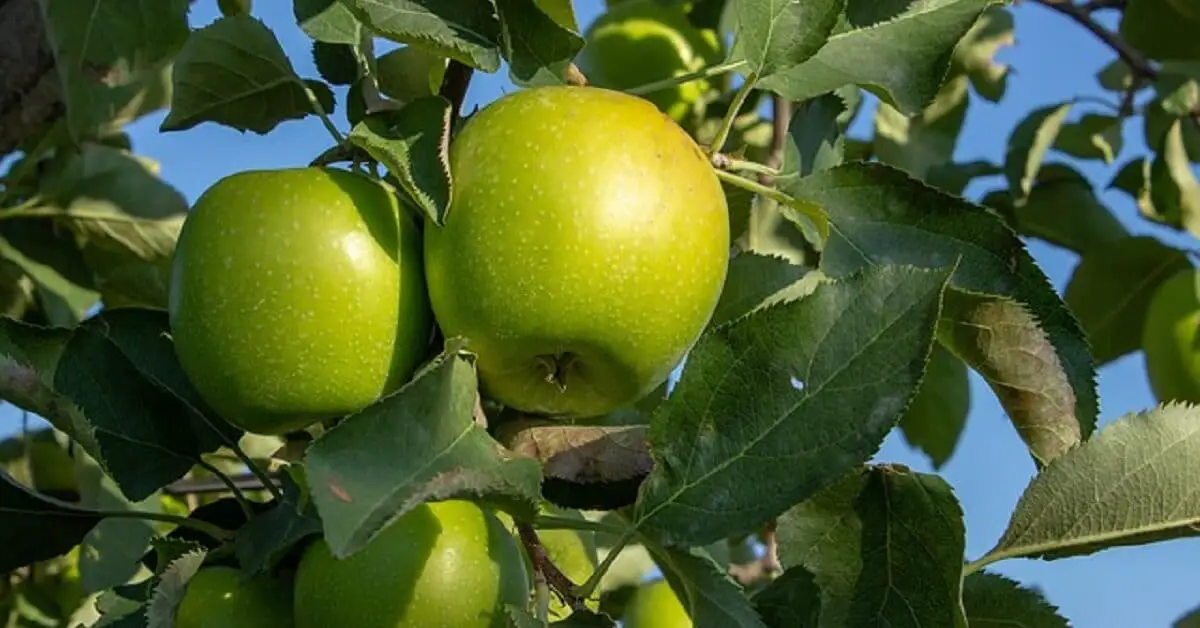
- Water: 85.1g
- Energy (Atwater Specific Factors): 53 calories
- Protein: 0.27g
- Total lipid (fat): 0.14g
Carbohydrates:
- Carbohydrate, by difference: 14.1g
- Carbohydrate, by summation: 13.2g
- Fiber, total dietary: 2.5g
Sugars:
- Sugars, total: 10.6g
- Sucrose: 1.61g
- Glucose: 2.68g
- Fructose: 6.36g
- Lactose: <0.15g
- Maltose: <0.15g
Minerals:
- Calcium, Ca: 5mg
- Iron, Fe: 0.07mg
- Magnesium, Mg: 5.1mg
- Phosphorus, P: 10mg
- Potassium, K: 116mg
- Sodium, Na: <1mg
Trace minerals:
- Zinc, Zn: 0.02mg
- Copper, Cu: 0.035mg
- Manganese, Mn: 0.039mg
Vitamins:
- Thiamin: 0.017mg
- Riboflavin: 0.075mg
- Niacin: 0.11mg
- Vitamin B6: 0.028mg
- Folate, total: <6µg
Source: USDA
Gala apple nutrition
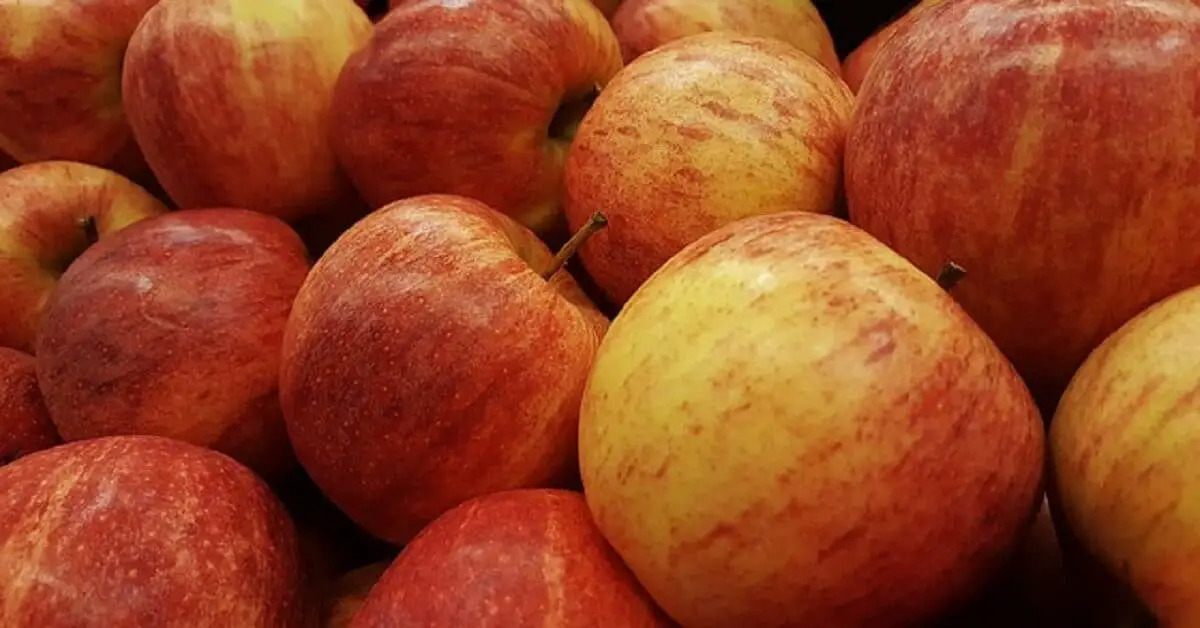
Gala apple originated in New Zealand as a cross between Kidd’s Orange Red and Golden Delicious. It was introduced to the U.S. in the 1970s.
Gala apples have a high mineral content. The calcium content (7mg per 100g of apples) is significantly higher than the calcium contents of Granny Smith (5mg), Red Delicious (5mg), Fuji (6mg), and Honeycrisp (4 mg).
Gala is also rich in iron. Its iron content of 0.06mg per 100g is exceeded only by Granny Smith (0.07mg) among cultivars profiled in this article.
Gala apples tend to be orange-colored with an admixture of red. Apples with orange and yellowish skin have higher levels of antioxidant carotenoids than red varieties of apples.
Gala ranks alongside Red Delicious as the most widely cultivated in the U.S.
Gala apple nutrition facts (per 100g)
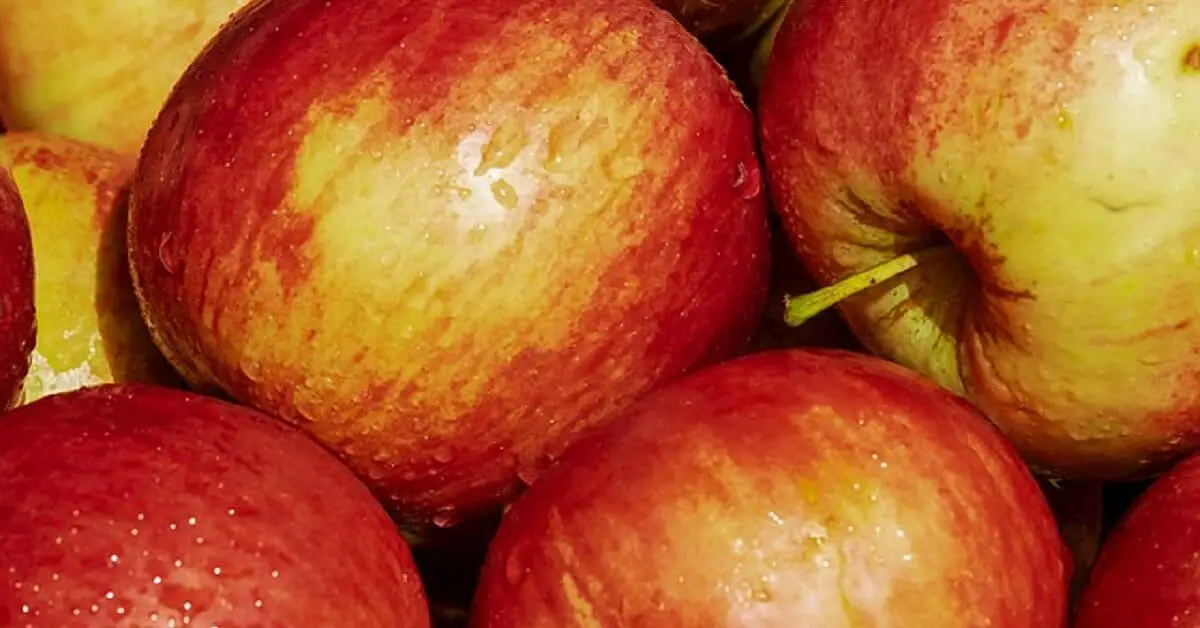
- Water: 84.6g
- Energy (Atwater Specific Factors): 55 calories
- Protein: 0.13g
- Total lipid (fat): 0.15g
Carbohydrates:
- Carbohydrate, by difference: 14.8g
- Carbohydrate, by summation: 13.9g
- Fiber, total dietary: 2.1g
Sugars:
- Sugars, total: 11.8g
- Sucrose: 2.06g
- Glucose: 2.01g
- Fructose: 7.76g
- Lactose: <0.15g
- Maltose: <0.15g
Minerals:
- Calcium, Ca: 7mg
- Iron, Fe: 0.06mg
- Magnesium, Mg: 4.9mg
- Phosphorus, P: 8mg
- Potassium, K: 106mg
Trace minerals:
- Zinc, Zn: 0.02mg
- Copper, Cu: 0.034mg
- Manganese, Mn: 0.04mg
Vitamins:
- Thiamin: 0.011mg
- Riboflavin: 0.069mg
- Niacin: 0.089mg
- Vitamin B-6: 0.032mg
- Folate, total: 1mcg
Source: USDA
Red Delicious apple nutrition
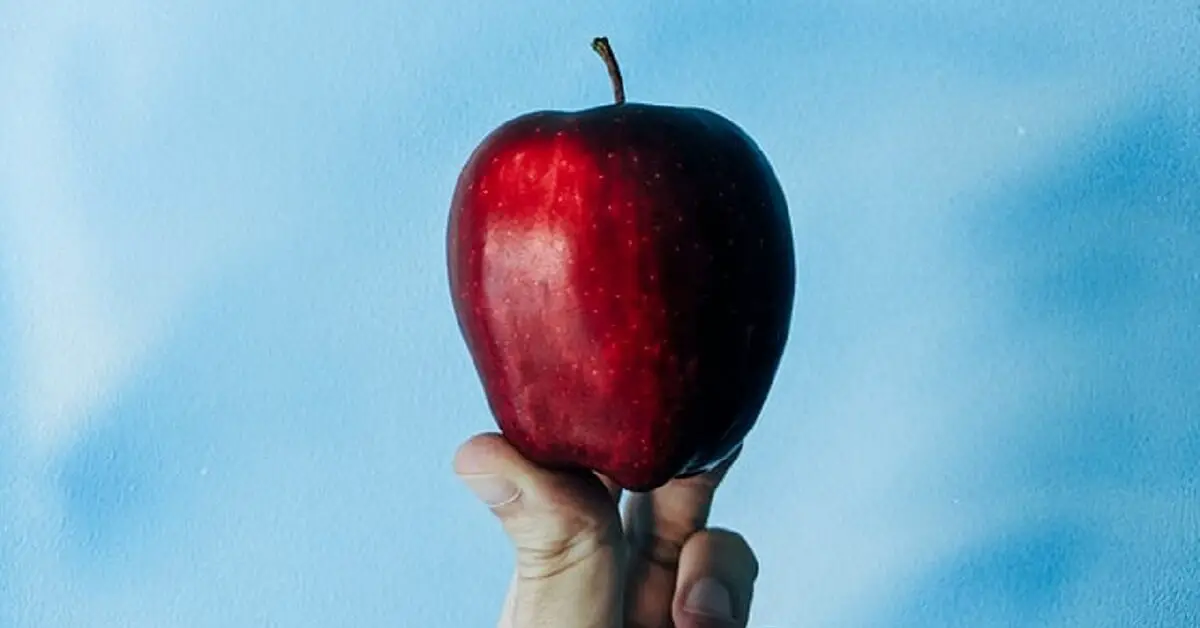
Red Delicious apple is probably the best-known variety in the U.S. It originated in the 1870s in Iowa.
It is known for its rich, deep red color and sweet, crispy flavor. Some subvarieties have an elongated shape while others are rounder.
Red Delicious is relatively high in calories and carbs compared with other apple varieties (only Fuji variety has higher calorie and carb contents among the five best-known apple varieties profiled in this article).
The peels or skin of Red Delicious are rich in polyphenol antioxidants, including the pigments anthocyanins and anthocyanidins.
Varieties of apples with bright colors, such as Red Delicious, have the highest levels of flavonoid pigments.
A study by He and Liu (2008) reported that Red Delicious apple peels contained bioactive phytochemicals. The researchers identified 29 compounds, including triterpenoids, flavonoids, organic acids, and plant sterols with antiproliferative (anti-cancer) and antioxidant activities.
The bioactive flavonoids included the antioxidant quercetin and quercetin compounds, such as quercetin-3-O-beta-D-glucopyranoside which have antiproliferative properties against liver cancer cells and breast cancer cells.
The researchers also reported that quercetin, quercetin-3-O-beta-D-arabinofuranoside, and phenolic compounds, such as caffeic acid, had potent antioxidant properties.
Red Delicious apple nutrition facts (per 100g)
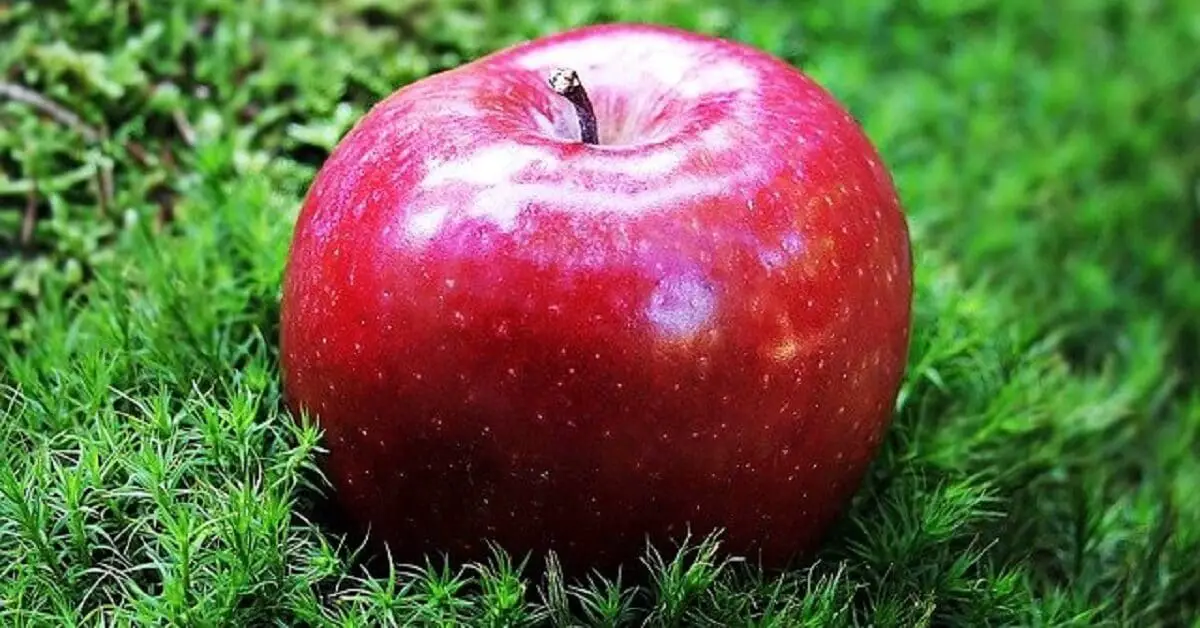
- Water: 84.7g
- Energy (Atwater Specific Factors): 56 calories
- Protein: 0.19g
- Total lipid (fat): 0.21g
Carbohydrates:
- Carbohydrate, by difference: 14.8g
- Carbohydrate, by summation: 14.3g
- Fiber, total dietary: 2g
Sugars:
- Sugars, total: 12.2g
- Sucrose: 1.32g
- Glucose: 3.09g
- Fructose: 7.81g
- Lactose: <0.15g
- Maltose: <0.15g
Minerals:
- Calcium, Ca: 5mg
- Iron, Fe: <0.1mg
- Magnesium, Mg: 4.7mg
- Phosphorus, P: 9mg
- Potassium, K: 95mg
- Sodium, Na: <1mg
Trace minerals:
- Zinc, Zn: 0.02mg
- Copper, Cu: 0.024mg
- Manganese, Mn: 0.029mg
Vitamins:
- Thiamin: 0.009mg
- Riboflavin: 0.066mg
- Niacin: 0.09mg
- Vitamin B6: 0.021mg
- Folate, total: <6µg
Source: USDA
Fuji apple nutrition

Fuji apple originated in Japan in the 1930s as a cross between Ralls Janet and Red Delicious. It was introduced to U.S. consumers in the 1980s.
The cultivar is known for its sweet flavor. It has a mix of stripes of yellow and red colors.
Fuji apple variety has the highest calories, carbs, and sugars among the four apple varieties covered in this article. A 100g of Fuji has 15.4g of carbs and 13.3g of total sugars, compared with Honeycrisp (14.1g of carbs, and 12.4g of sugars), Gala (13.9g carbs, 11.8g sugars), Granny Smith (13.2g carbs, 10.6g sugars), and Red Delicious (14.3g carbs, 12.2g sugars).
But despite relatively high carbs and sugar contents, apples generally have a low glycemic index (GI) due to their high soluble and insoluble fiber contents. Eating apples helps control blood sugar levels and prevention of diabetes.
Fuji apples have relatively high polyphenol content. Polyphenols offer many health benefits, including cardio-protective and hepatoprotective properties.
A study by Alberti and associates (2017) found that the Fuji variety had the highest levels of flavonols in the senescent stage. Bai and colleagues (2016) also found that Fuji apples were richer in a wider variety of apple polyphenols than other varieties.
According to Tanaka and associates (2020), Fuji cultivars have a watercore.
Watercores are usually considered a defect because they cause rapid softening of the flesh associated with undesirable changes in the flavor and texture of the fruit. However, Fuji cultivars first gained popularity in Asian countries due to their unique watercore properties, enhanced flavor, and good texture.
Fuji apple nutrition facts (per 100g):
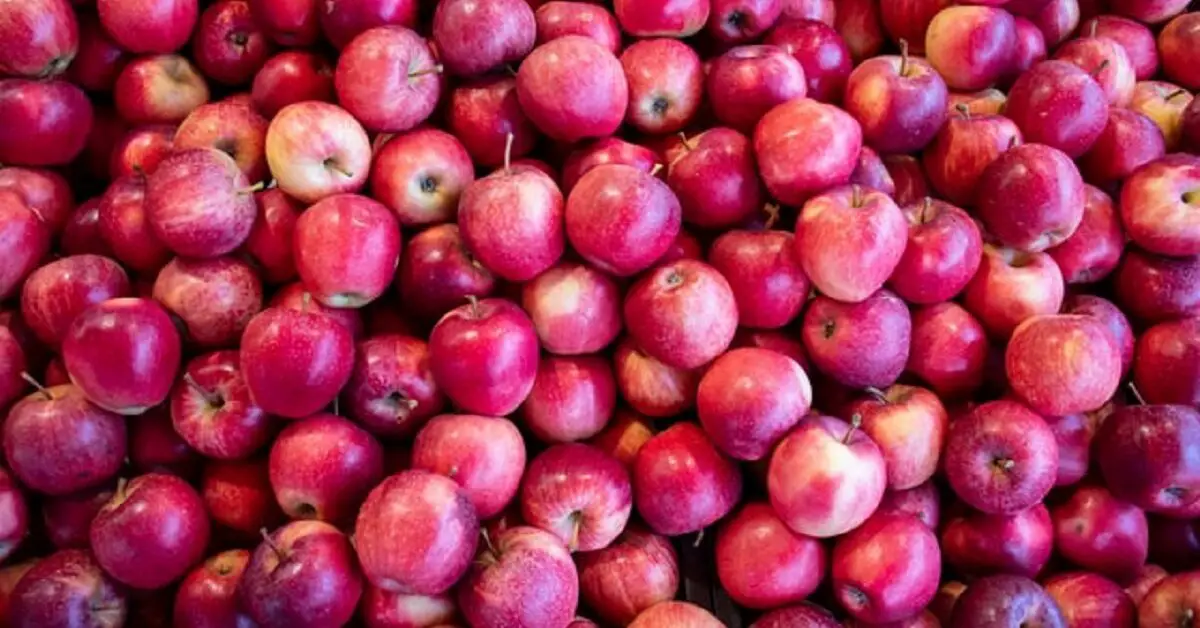
- Water: 83.6g
- Energy (Atwater Specific Factors): 58 calories
- Protein: 0.15g
- Total lipid (fat): 0.16g
Carbohydrates:
- Carbohydrate, by difference: 15.6g
- Carbohydrate, by summation: 15.4g
- Fiber, total dietary: 2.1g
Sugars:
- Sugars, Total: 13.3g
- Sucrose: 1.7g
- Glucose: 3.04g
- Fructose: 8.59g
- Lactose: <0.15g
- Maltose: <0.15g
Minerals:
- Calcium, Ca: 6mg
- Iron, Fe: 0.02mg
- Magnesium, Mg: 4.7mg
- Phosphorus, P: 10mg
- Potassium, K: 104mg
- Sodium, Na: 1mg
Trace minerals:
- Zinc, Zn: 0.02mg
- Copper, Cu: 0.033mg
- Manganese, Mn: 0.033mg
Vitamins:
- Thiamin: 0.006mg
- Riboflavin: 0.068mg
- Niacin: 0.091mg
- Vitamin B6: 0.035mg
- Folate, total: <6µg
Source: USDA
Honeycrisp apple nutrition
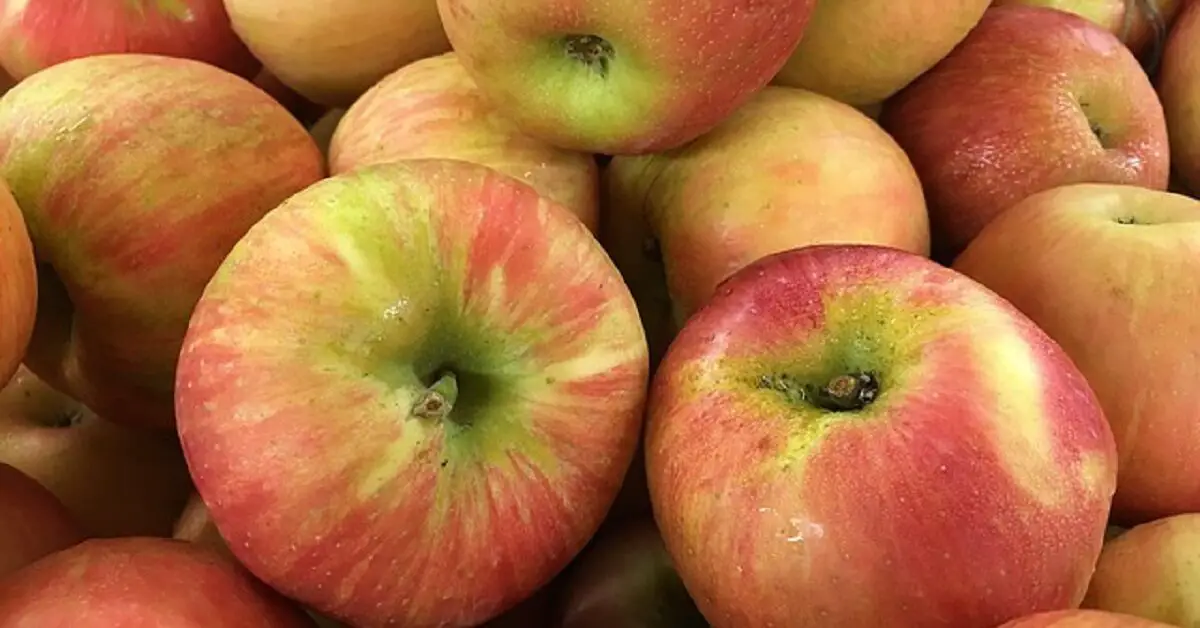
Honeycrisp apple was developed at the University of Minnesota and released in 1991. It is known for its sweet flavor and juiciness.
The cultivar’s sweet flavor is its main selling point. There isn’t much to recommend about this cultivar to health-conscious consumers.
Honeycrip’s 14.1g of carbs (per 100g) and 12.4g of total sugars make it a cultivar with relatively high calories. It has low levels of vitamins and minerals compared with varieties such as Granny Smith.
Its total fiber content of 1.7g/100g is also low compared with Granny Smith (2.5g), Gala (2.1g), Red Delicious (2g), and Fuji (2.1g).
Honeycrisp apple nutrition facts (per 100g)
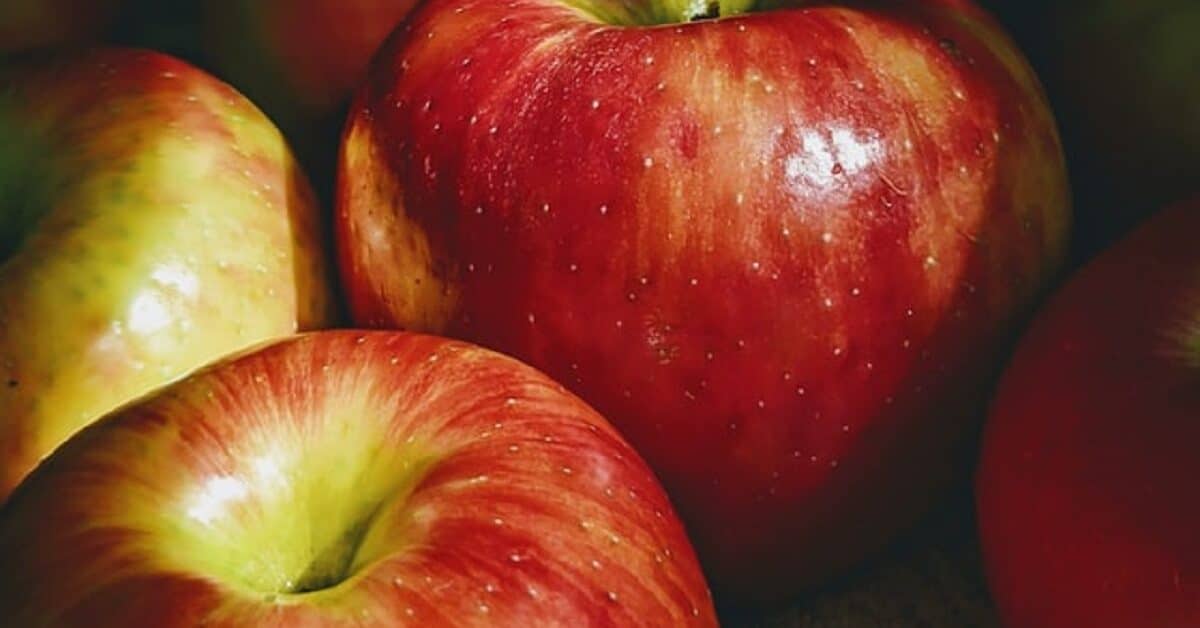
- Water: 85g
- Energy (Atwater Specific Factors): 54 calories
- Protein: 0.1g
- Total lipid (fat): 0.1 g
Carbohydrates:
- Carbohydrate, by difference: 14.7g
- Carbohydrate, by summation: 14.1g
- Fiber, total dietary: 1.7g
Sugars:
- Sugars, total: 12.4g
- Sucrose: 1.31g
- Glucose: 2.31g
- Fructose: 8.75g
- Lactose: <0.15g
Maltose: <0.15g
Minerals:
- Calcium, Ca: 4mg
- Iron, Fe: <0.1mg
- Magnesium, Mg: 4.2mg
- Phosphorus, P: 8mg
- Potassium, K: 98mg
Trace minerals:
- Zinc, Zn: 0.02 mg
- Copper, Cu: 0.023mg
- Manganese, Mn: 0.04mg
Vitamins:
- Thiamin: 0.009mg
- Riboflavin: 0.074mg
- Niacin: 0.074mg
- Vitamin B6: 0.033mg
- Folate, total: <6mcg
Source: USDA

